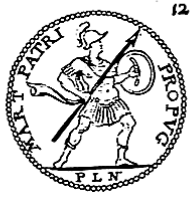Reading The Rebel Emperors of Britannia (Barker and Moorhead, 2023) it brought up a reference to a seventeenth century work I was not previously aware of that illustrated coins of Carausius and Allectus . The Thesaurus Selectorum Numismatum Antiquorum, 1677, by Jacobs Oiselius (delatinised as Jacques Oisel, 1631-86), O10 in Dekesel's Bibliograpy.
Oiselius was, I believe, an academic. Disappointingly he is ignored in Bassoli's Antiquarian Books on Coins and Medals (2001), and glossed over in Babelon's Ancient Numismatics and it's History (2004 translation). His "Thesaurus..." is a profusely illustrated catalogue of ancient coins with one hundred plus plates of predominantly Roman coins. Some of the the engravings are better than others and it is the reverses that are the most faithfully engraved.
I've abstracted here not just the Carausius and Allectus engravings but also those of interest to the scholar of Romano-British coinage as a whole, including Britannia reverses and those coins from the tetrarchy London mint.
Plate 12 contains engravings of the obverse of two coins, the first Carausius, the other Allectus. The rendition of Carausius is rather poor, with no drapery or cuirass showing. The Allectus, on the other hand, is better, with the thin, bearded features showing some similarity to the coins we know.
Next there are a couple of tetrarchic coins on Plate 13.
The coin above labelled 2 is a post abdication follis of Maximianus. The obverse titles are predominantly used at the London mint, although a rare silver half unit from Trier could be the inspiration.
Coin 4 above is not certainly drawn from a London mint specimen. The deified Constantius obverse could equally be derived from a Trier mint follis.
The MART PATRI PROPVG (sic), missing the I from MARTI in the engraving, is a type from early in the reign of the elevated Constantine I.
Moving away from coins stuck in Britain to those that feature British themes we get, on Plate 27, the reverse of a coin of Claudius depicting the ceremonial arch commemorating the invasion. The text does not state whether this is take from a gold or silver piece. The engraver has blundered in that the wording across the top reads DE BRITANNIS (sic) wen it should be just DE BRITANN and they may have been mistaken by the German celebratory arch that has it spelt out fully.
The next three images below are also from plate 27, reverses of coins of Antoninus Pius. It is clear that scale of the coins is less important to the engraver than the images that the portray.
Coin 4 is clearly the middle bronze, most likely the as with the laureate bust of Pius on the obverse, although there is always the possibility it is the much scarcer dupondius with the radiate bust of the emperor on the other side. Coin 5 is the larger denomination, the sestertius. Coin 6 is another sestertius but with the word IMPERATOR erroneously truncated by the engraver.







